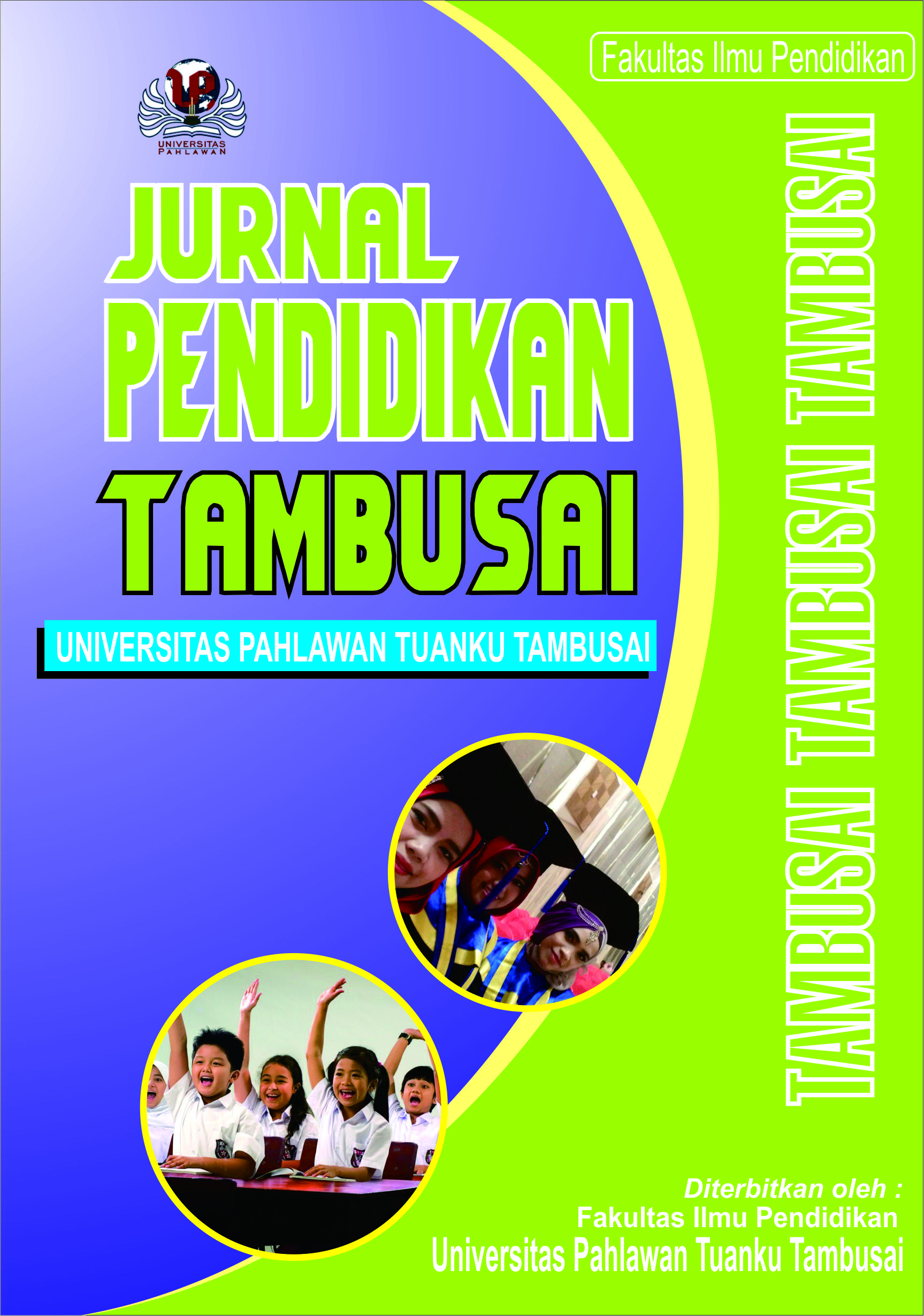Analysis of the Needs for Using E-Modules to Overcome the Limitations of Physics Teaching Materials on Alternating Electric Current Materials
DOI:
https://doi.org/10.31004/jptam.v7i3.11761Keywords:
Analisis Kebutuhan, Modul Elektronik, Fisika, Arus Listrik Bolak-BalikAbstract
References
Ahmadi, S., Keshavarzi, A., & Foroutan, M. (2011). The Application of Information and Communication Technologies (ICT) and its Relationship with Improvement in Teaching and Learning. Procedia-Social and Behavioral Sciences, 28, 475-480.
Ananda, P. N., & Usmeldi. (2023). Validity and Practicality of E-Module Model Inquiry Based Online Learning to Improve Student Competence. Jurnal Penelitian Pendidikan IPA, 9(4), 2010–2017. https://doi.org/10.29303/jppipa.v9i4.3563
Anderson, R. H. 1987. Pemilihan dan Pengembangan Media untuk Pembelajaran. Jakarta.
Apriyanti, N., Razak, R. A., Nizam, M. S., Syrene, S., Rahim, A., & Halili, S. H. (2020). Needs Analysis Of Infographic Media Using Technology for Learning Physics. Malaysian Online Journal of Educational Technology, 8(1), 48–62. https://doi.org/http://dx.doi.org/10.17220/mojet.2020.01.004
Arif, M., Festiyed, Desnita, & Dewi, W. S. (2019). Pembuatan Bahan Ajar Berbasis Android untuk Pembelajaran Fisika pada Materi Gelombang Bunyi, Gelombang Cahaya dan Alat Optik di Kelas XI SMA/MA. Pillar of Physics Education, 12(3), 457–464. https://doi.org/http://dx.doi.org/10.24036/7075171074
Astalini, Darmaji, Kurniawan, D. A., & Rohana, S. (2023). Student Perceptions and Responses?: Learning Using E-Module Physics-Math II. Jurnal Ilmu Pendidikan Fisika, 8(1), 53–63. https://doi.org/10.26737/jipf.v8i1.3274
Chekour, M., Seghroucheni, Y. Z., Tadlaoui, M. A., & Hafid, M. M. (2022). Blended Learning and Simulation for Teaching Electrical Concepts to High School Pupils. Journal of Turkish Science Education, 19(4), 1119–1134. https://doi.org/10.36681/tused.2022.165
Darmaji, Astalini, Kurniawan, D. A., Parasdila, H., Iridianti, Susbiyanto, Kuswanto, & Ikhlas, M. (2019). E-Module Based Problem Solving in Basic Physics Practicum for Science Process Skills. IJOE: International Journal of Online and Biomedical Engineering, 15(15), 4–17. https://doi.org/https://doi.org/10.3991/ijoe.v15i15.10942
Ghavifekr, S., Athirah, W., & Rosdy, W. 2015. Teaching and Learning with Technology: Effectiveness of ICT Integration in School. International Journal of Research in Education and Scince (IJRES), 1(2), 175-191
Halim, A., Mahzum, E., Yacob, M., & Irwandi, I. (2021). The Impact of Narrative Feedback , E-Learning Modules and Realistic Video and the Reduction of Misconception. Education Science, 11.https://doi.org/https://doi.org/10.3390/educsci11040158
Hamid, M. A., Yuliawati, L., & Aribowo, D. (2020). Feasibility of Electromechanical Basic Work E-Module as a New Learning Media for Vocational Students. Journal of Education and Learning, 14(2), 199–211. https://doi.org/10.11591/edulearn.v14i2.15923
Kurniawan, D. A., Putri, F. I., & Perdana, R. (2023). Student ’ s need analysis in using ordinary differential equation e- module of Mathematical Physics II. Momentum: Physics Education Journal, 7(1), 107–115. https://doi.org/10.21067/mpej.v7i1.2023
Latifah, N., Ashari, & Kurniawan, E. S. (2020). Pengembangan e-Modul Fisika untuk Meningkatkan Kemampuan Berpikir Kritis Peserta Didik. JIPS?: Jurnal Inovasi Pendidikan Sains, 1(1), 1–7. http://jurnal.umpwr.ac.id/index.php/jips
Maghfiroh, S., Wilujeng, I., & Masyitha, D. (2023). Development of Physics E-Module Based on Discovery Learning to Improve Students ’ Scientific Literacy. Jurnal Penelitian Pendidikan IPA, 9(2), 447–453. https://doi.org/10.29303/jppipa.v9i2.1733
Mahardika, I. K., Muzammil, M. H., Saragih, D. F., Putri, F. H., & Putri, N. E. (2023). Peranan Teknologi Dalam Proses Pembelajaran Fisika SMA. Jurnal Ilmiah Wahana Pendidikan, 9(2), 245–252. https://doi.org/https://doi.org/10.5281/zenodo.7571400
Matsun, & Saputra, D. F. (2020). Pengembangan E-Modul Fisika berbantuan WhatsApp sebagai Alternatif Pembelajaran di Masa Pandemi Covid 19. ORBITA: Jurnal Hasil Kajian, Inovasi, Dan Aplikasi Pendidikan Fisika, 6(2), 213–220.
Miles M. B. & Huberman A. M. 2007. Analisis Data Kualitatif, terj. Tjetjep Rohendi Rihidi. Jakarta: UI Press.
Moleong, L. J. 2002. Metodologi Penelitian Kualitatif. Bandung: PT. Remaja Rosdakarya.
Pazlina, N., & Usmeldi. (2020). Pengembangan E-Modul Dasar-dasar Listrik dan Elektronika Berbasis Problem-Based Learning. Jurnal Pendidikan Teknik Elektro, 01(01), 71–74. https://doi.org/https://doi.org/10.24036/jpte.v1i1.30
Puspitasari, A. D. (2019). Penerapan Media Pembelajaran Fisika Menggunakan Modul Cetak dan Modul Elektronik Pada Siswa SMA. Jurnal Pendidikan Fisika, 7(1), 17–25. http://journal.uin-alauddin.ac.id/indeks.php/PendidikanFisika%0Ap-ISSN
Putra, D. P. (2021). Pengembangan Media Pembelajaran Fisika Menggunakan Kartun 3D. Jurnal Literasi Digital, 1(2), 88–93. https://doi.org/https://doi.org/10.30605/jld.1.2.2021.17
Rahim, F. 2005. Pengajaran Membaca Sekolah Dasar. Jakarta: Bumi Aksara.
Ramadayanty, M., Sutarno, & Risdianto, E. (2021). Pengembangan E-modul FIsika Berbasis Multiple Representation untuk Melatih Keterampilan Pemecahan Masalah Siswa. Jurnal Kumparan Fisika, 4(1), 17–24. https://doi.org/https://doi.org/10.33369/jkf.4.1.17-24
Sujanem, R., & Suwindra, I. N. P. (2023). Problem-Based Interactive Physics E-Module through Blended PBL to Enhance Students’ Critical Thinking Skills. Jurnal Pendidikan IPA Indonesia, 12(1), 135–145. https://doi.org/10.15294/jpii.v12i1.39971
Sumarmi, Bachri, S., Irawan, L. Y., & Aliman, M. (2021). E-Module in Blended Learning?: Its Impact on Students ’ Disaster Preparedness and Innovation in Developing Learning Media. International Journal of Instruction, 14(4), 187–208.
Wahyuni, D., & Sari, M. (2020). Efektifitas e-Modul Berbasis Problem SolvingTerhadap Keterampilan Berfikir Kritis Perserta Didik. Natural Science: Jurnal Penelitian Bidang IPA Dan Pendidikan IPA, 6(2), 2477–6181.
Wulandari, K., Muntoiyah, S., & Prihatiningtyas, S. (2020). Pengembangan E-modul Fisika Berbasis Karakter. Exact Papers in Compilation, 2(3), 299–306.
Downloads
Published
How to Cite
Issue
Section
Citation Check
License
Copyright (c) 2023 Dhea Febriya

This work is licensed under a Creative Commons Attribution-ShareAlike 4.0 International License.
Authors who publish with this journal agree to the following terms:
- Authors retain copyright and grant the journal right of first publication with the work simultaneously licensed under a Creative Commons Attribution License that allows others to share the work with an acknowledgement of the work’s authorship and initial publication in this journal.
- Authors are able to enter into separate, additional contractual arrangements for the non-exclusive distribution of the journal’s published version of the work (e.g., post it to an institutional repository or publish it in a book), with an acknowledgement of its initial publication in this journal.
- Authors are permitted and encouraged to post their work online (e.g., in institutional repositories or on their website) prior to and during the submission process, as it can lead to productive exchanges, as well as earlier and greater citation of published work (See The Effect of Open Access).



